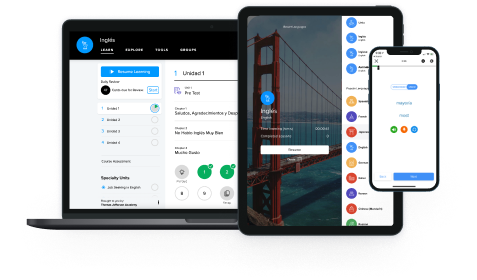GermanTenses, Auxiliary Verbs, Verbs The past perfect, called Plusquamperfekt in German, is used to refer to past events that happened before another past event. It is a combination of the past tense of the haben or sein and the past participle of the main . Here is an example:
auxiliary verb (past tense)main verb (past participle)
Als Anne nach Hause kam, hatte ihr Mann bereits das Abendessen gemacht.
When Anne came home, her husband had already made dinner.
You can see in the example above that Anne’s dear husband had prepared the dinner before she came home. Both actions happened in the past, but one happened earlier than the other. Let’s find out how this is done in German!
When to use the past perfect in German?
In German, we use the past perfect to show that something happened before another past moment — to talk about a time that is “even more in the past than the past tense.”
The German term for this tense, Plus-quam-perfekt, is actually Latin and literally means “more than completed.” Here, “completed” refers to the past tense, which we use for completed actions. Let’s see an example:
past perfectsimple past
Lucas hatte viel trainiert und schoss gestern drei Tore.
Lucas had trained a lot and scored three goals yesterday.
We can visualize this situation in a timeline:
Lucas hatte viel trainiert.
Er schoss gestern drei Tore.
He scored three goals yesterday.
Because the Plus-quam-perfekt makes clear which of the two events happened first, we can put the two verbs in any order:
past perfectsimple past
Lucas schoss gestern drei Tore, weil er viel trainiert.
Lucas scored three goals yesterday because he had trained a lot.
Just like English, German has several ways of discussing actions in the past. There’s the Präteritum(simple past) and also the Perfekt(perfect tense). In colloquial German, you may hear the Perfekt used with the Plusquamperfekt quite often.
past perfectperfect tense
Lucas hat gestern drei Tore geschossen, weil er viel trainiert hatte.
Lucas scored three goals yesterday because he had trained a lot.
⤷ TIPIn those last two sentences,
hatte follows
trainiert because
weil er viel trainiert hatte is a
subordinate clause, and the auxiliary usually comes last in subordinate clauses.
So far, the past perfect in German sounds pretty similar to the English past perfect (“had verbed”) form. But, as usual, German has a catch with the past perfect that makes it so special: You do not always use a form of haben(to have), like in English, but sometimes the auxiliary verb sein(to be) instead.
Let’s have a closer look at how to form this tense!
How to form the past perfect in German?
If you’ve already mastered the German perfect tense, then forming the past perfect is really quite simple. The recipe goes like this:
Take the perfect tense of a verb:
Put the auxiliary verb, haben or sein, into the past tense:
It’s super simple, right?
If you haven’t mastered the perfect tense yet, no worries, here are some instructions for forming the past perfect from scratch:
Start with the dictionary form of the word you want to put into the past perfect:
Form the past participle by adding ge…t (for regular verbs) or ge…en (for irregular verbs) to the base form:
This is a general rule on participles, but you can learn more from our post on German past participles.
Add the past tense auxiliary verb. For verbs referring to changing places or states, use sein; for other verbs, use haben The past tense stem for sein is war-, and the past tense stem for haben is hatt-.
Much like in the perfect tense, in the past perfect you can…
Form questions by bringing haben/sein to the front, followed by the subject:
Form a negative sentence with nicht(not):
Ich hatte nicht gespielt.
Hattest du nicht gespielt?
Remember that the past perfect is a (like the perfect and future tense). This means that:
In a , the auxiliary verb haben or sein comes in the second position, but the participle goes to the end of the clause.
In a , the combination participle + haben/sein comes at the very end.
‘Haben’
To form the past perfect with non-movement verbs, we use the simple past of the auxiliary verb haben:
Most verbs in German use this auxiliary, so hatt- is by far the most common way to recognize the past perfect. Here are some examples:
Nachdem Patrick fertig gearbeitet hatte, ging er in die Kantine.
After Patrick had finished his work, he went to the canteen.
Sie erinnerte sich, dass Don sie eingeladen hatte.
She remembered that Don had invited her.
Bernd hatte davon schon seit einiger Zeit gewusst.
Bernd had known about it for a while.
‘Sein’
To form the past perfect with movement verbs, we use the simple past of the auxiliary verb sein:
Movement verbs are those that indicate a change of place or a change of state. Here are some actions that fit in each of these categories:
Here are some examples in German:
Nachdem Patrick angekommen war, ging er in die Kantine.
After Patrick had arrived, he went to the canteen.
Sie erinnerte sich, dass Don Arzt geworden war.
She remembered that Don had become a doctor.
Bernd war schon vorher in die USA geflogen.
Bernd had flown to the USA before.
Colloquial usage of the past perfect
While the past perfect in English is strictly used only when referring to the past of the past, Germans tend to overuse it sometimes, even when there is no reference to another past event. This usage is rather colloquial. Take a look at the examples below:
Ich war noch nie da gewesen.
I had/have never been there.
Das Auto hatte vorhin schon hier geparkt.
That car was parked here earlier.
Gestern hatten wir Oma besucht, weil sie uns eingeladen hatte.
Yesterday, we visited our grandma because she had invited us.
Summing up
So, what have we covered today? Let’s review!
The Plusquamperfekt (or past perfect) is the past of the past and it is used to refer to past events that happened before another past event.
The past perfect is a combination of the past tense of the auxiliary verbs haben or sein and the past participle of the main verb.
The auxiliary verb haben is used in most cases, but sein is used with verbs referring to change of place or change of state.
Notable exceptions to the rule are the verbs sein and bleiben.
Feeling confident with the past perfect in German? Try it out with our German past perfect exercises! Happy learning!
To embark on your next language adventure, join Mango on social!

